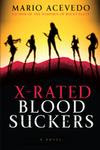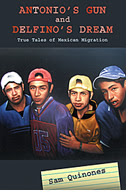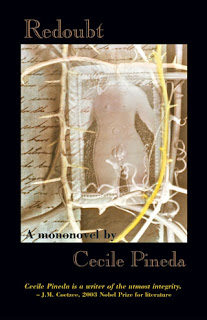 Skipping Stones is an award-winning, nonprofit magazine for youth that encourages communication, cooperation, creativity and celebration of cultural and environmental richness. Founded in 1988 and published five times a year, Skipping Stones provides a forum for sharing ideas and experiences among youth from different countries and cultures. Art and original writings submissions in every language and from all ages are always welcomed.
Skipping Stones is an award-winning, nonprofit magazine for youth that encourages communication, cooperation, creativity and celebration of cultural and environmental richness. Founded in 1988 and published five times a year, Skipping Stones provides a forum for sharing ideas and experiences among youth from different countries and cultures. Art and original writings submissions in every language and from all ages are always welcomed.
Each year Skipping Stones recognizes outstanding authentic books and teaching resources with the Annual Skipping Stones Honor Awards. The honored books, published by both large and small publishers, promote cooperation and cultivate an awareness of our diverse cultures. Together, they encourage an understanding of the world’s diversity, ecological richness, respect for differing viewpoints and close relationships in human societies. Bound to provide a great reading adventure, they offer a variety of learning experiences. Reviewers aged 8 to 80, from many backgrounds and life experiences, help select the winners and their reviews are published in the Summer Skipping Stones issue.
The 2009 winners are broken down into 3 categories - Multicultural & International Awareness, Nature and Ecology Books, and Teaching and Parenting Resources; and winning titles include:
Secret Keeper by Mitali Perkins,
The Storyteller’s Candle by Lucia Gonzalez, illustrated by Lulu Delacre,
Grandfather’s Story Cloth by Linda Gerdner and Sarah Langford, illustrated by Stuart Loughridge.
For a complete list of the winners, click here: I just printed it off and will be heading to my local library this afternoon to see what treasures I can find!
 The Hmong Cultural Center in St. Paul, Minnesota hosted a book reading for Grandfather’s Story Cloth on June 11. This was my very first book reading so naturally I was a bit nervous.
The Hmong Cultural Center in St. Paul, Minnesota hosted a book reading for Grandfather’s Story Cloth on June 11. This was my very first book reading so naturally I was a bit nervous.
The age span of the audience was diverse. The majority were adults but many also brought their children or grandchildren. Because Hmong was the primary language for many attendees, we gave a bilingual reading, with lots of smiles and conversation along the way. As the text was being read, I walked around the room so the corresponding illustrations could be viewed from a closer vantage point. Participants pointed to the rich detail that Stuart has created in these water color paintings, this was especially true of the two-page spread of the story cloth itself and the scene in which Grandfather is burying a silver bar in his garden. Each time, I waited with anticipation and then eyes would rise from the page and give me a broad smile. I interpreted this as a sign of approval.
After the reading I presented the center’s library with a copy of Grandfather’s Story Cloth. Next, Lia Yang presented me with a beautiful, intricately stitched story cloth that she had made. Next we had refreshments of egg rolls (delicious!!!) and white gourd drink (delightful!). I will forever cherish the new friends that I made that day and the beautiful story cloth stitched by Lia Yang.
I thought it might be fun to share the “story collage” of some of our memories from that day. Find it here.
 I am so pleased with our upcoming book (available in May 2008), Grandfather's Story Cloth by Linda Gerdner and illustrated by Stuart Loughridge. I just sent it off to the printer last week, after months and months of work, but it has turned out even better than I had imagined it would be. I can't wait for the world to see this wonderful book about a Hmong boy and his grandfather, who has Alzheimer's disease. Oh, just read the blurb for yourself:
I am so pleased with our upcoming book (available in May 2008), Grandfather's Story Cloth by Linda Gerdner and illustrated by Stuart Loughridge. I just sent it off to the printer last week, after months and months of work, but it has turned out even better than I had imagined it would be. I can't wait for the world to see this wonderful book about a Hmong boy and his grandfather, who has Alzheimer's disease. Oh, just read the blurb for yourself:
Chersheng's grandfather is beginning to forget things: little things like turning off the water faucet and big things like Chersheng's name. Sometimes he even forgets that he is in America now. Chersheng feels sad and helpless when he learns that Grandfather has Alzheimer's Disease, but then Chersheng's mother presents him with a story cloth stitched by Grandfather himself, embroidered in the Hmong tradition.
Through the story cloth, Grandfather's memories of his life in Laos come alive. And inspired by Grandfather's tales about his life before the war forced him to immigrate to America, Chersheng comes up with a plan to capture his family's new life with his own art project. This way, they can all remember that their love is stronger than Alzheimer’s Disease, no matter which country they live in.
Linda Gerdner's heartwarming story addresses the increasing number of children who live with elderly grandparents with dementia. This volume, presented bilingually in English and Hmong, allows children and their loved ones not only to gain a compassionate understanding of Alzheimer's Disease, but also to share in the simplest act of pleasure and love -- that of reading together.
Maybe if I can figure out how, I'll post a few pages from the interior. Ah, technology. We'll see what I can do.
pensamientos on 4 books - by RudyG (Denver)
It would be a stretch for me to link this post to Father's Day, so I won't try. . . I've been gone so long from this site. . . I thought of sharing memories of my past year with 22 bilingual second graders, but alas, there were no tearful moments to end such a piece with. . . I considered ranting about the strain of reaching and teaching U.S. children when the educational bureaucracy binds one arm about your body, but thankfully, I'm bored with my rants.
Anyway, since my compa's on La Bloga have done a better-than-scholarly job since my going on sabbatical, I accept that anything I post is destined to pale. . .
Though I've written little in past months, I have read, some great and some so-so. Since I suck as a reviewer, better I just share mis pensamientos about four books, which I highly recommend, for differing reasons:
First: Dan Olivas recently gave us a great interview with Mario Acevedo, author of X-Rated Bloodsuckers (from Rayo press). I enjoyed his first, Nymphos of Rocky Flats, even though the vampire genre is not high on my list of must-reads. Maybe I read both because like some of you I'm aburrido con movies, TV programs and books where even the bad guys are usually Anglo. Mario's storytelling talents made his novel well worth the digression.
 Now, to my minor, peculiar thoughts about this book: the format Mario--more likely his publishers--used to handle Mexican vocabulary. Here's two examples:
Now, to my minor, peculiar thoughts about this book: the format Mario--more likely his publishers--used to handle Mexican vocabulary. Here's two examples:
1. "He snipped the pouch open and squeezed blood over his chile relleno combination plate. "Smothered. The only way to eat Mexican food. Come tomorrow this chile and beans are going to turn my ass into a weapon of mass destruction." [Nymphos, p. 214]
2. " 'Tripas for menudo. Sesos. Lengua. You name it.' . . . It wasn't tripe, brains or tongue that I wanted." [Nymphos, p. 35]
As an accommodation to the non-Spanish readers, this style feels non-intrusive. An English reader should get that the relleno plate was chile and beans, and easily understand the second passage. In the back of my bilingual brain I notice this accommodation, but glide over it. Now look at the format adopted in Mario's latest book:
"Que bonito chante," Coyote said. What nice digs. . . "Pa'que?" What for?" [X-Rated, p.78]
Not every Spanish word is handled this way. Nada is not translated, assumedly because of wide usage. And other formats are sometimes used, like dashes around the translation instead of a literal repetition in English. But the vast majority of Spanish terms are tediously, almost inexorably follow the above format.
The style used in Nymphos required more skill by the author, and at times more effort by the reader, both desirable in a literate society. But flexibility in Mario's first work, gave way to regimentation in his second. It reminds me somewhat of a condescending approach toward Anglos. "Let's repeat it to the poor English reader, right afterwards, very obviously, so he doesn't have to use his brain to grapple with a foreign tongue," I can hear the editors thinking.
Clearly, I'm putting words in people's mouths. This may in fact be Mario's new approach to dealing with monolingual readers. Since I'm not one of them, I can't complain as such. I'm simply ranting as a bilingual that this format draws more attention to itself in its didactics than his previous style, making me very aware of its usage and taking me out of the story, not a desirable literary feature.
Notwithstanding its peccadillo, do check out X-Rated Bloodsuckers. Then you will also learn what tapetum lucidum means.
 Second: Fellow Bloguista Dan Olivas also previously highlighted Antonio's Gun and Delfino's Dream, from UNM Press, the second collection of border/migration chronicles by Sam Quinones.
Second: Fellow Bloguista Dan Olivas also previously highlighted Antonio's Gun and Delfino's Dream, from UNM Press, the second collection of border/migration chronicles by Sam Quinones.
If you enjoy investigative reporting--hard facts and wonderful trivia--this book is a must. It's historical in that it details anomalies like the rise and demise of Elvis-velvet paintings, and it is insightful in the wealth of personal narrative Quinones collected over many years of communicating with Mexican immigrants.
In our ignorant era of anti-immigrant hate-propaganda, billions-for-border-patrols and the attempted elimination of U.S. bilingualism, I have an added reason you should check this very readable book: because you work with mexicanos. I recommend this book (plus his True Tales From Another Mexico) to those of you--Chicano or otherwise--who need to know more about the mexicanitos you teach, the immigrant families you service or the expatriated machos you sell to.
Face it: Americans, including Chicanos, don't really have much prior knowledge about the mexicano. We have stereotyped ideas about why they came, what their aspirations are, what they hope their children's futures will be.
For instance, my previous assumption was that many mexicanos who send money back to Mexico will return or retire there. I even had a student this year who repeatedly retorted to my criticizing her poor attendance with, "My dad says we're going back to Mexico one day, anyway."
It's only from Quinones' book that I learned how and why this aspiration has instead resulted in Mexican ghost towns filled with custom-built homes financed by immigrant dollars, homes that are occupied maybe twice a year by expatriates whose ties to the motherland weaken with each year they spend in the U.S. Many become permanent residents of their adopted country.
This knowledge led to my adjusting discussions with immigrant parents about their kids' schoolwork. One parent was surprised I knew so much about Zacateca migration, about his upgrading his home there, about my prediction that he might never return with his family--all things garnered from an informative read of Antonio's Gun and Delfino's Dream.
Visit Quinones's website for more information.
 Third: I've been accused of being a homophobe, but I like to think it's just cultural vestiges of my muy macho-ness. I do admit queer lit is even lower on my list than vampire novels. This means that added to my weaknesses as a book reviewer, I've little knowledge of novels written by or featuring lesbians. So, when I picked up Like Son (Akashic Books), by Felicia Luna Lemus, I wouldn't have been surprised to not like it, or not finish it, something I rarely do.
Third: I've been accused of being a homophobe, but I like to think it's just cultural vestiges of my muy macho-ness. I do admit queer lit is even lower on my list than vampire novels. This means that added to my weaknesses as a book reviewer, I've little knowledge of novels written by or featuring lesbians. So, when I picked up Like Son (Akashic Books), by Felicia Luna Lemus, I wouldn't have been surprised to not like it, or not finish it, something I rarely do.
But this is one of the most captivating, literary novels I've read in years.
Set against a thematic backdrop of historical figure Nahui Olin (the mesmerizing cover photo), Like Son feels like a novel only a Chicano, una mujer escandalosa as Lemus calls herself, could write. That it is considered a jewel in the transgender circuit unfortunately may mean many in the Chicano-reader world will never enjoy the experience of Lemus's great writing.
Yes, even a homophobe will find considerable merit in the well-developed, complicated plotting in this coming-of-age story that engaged this hetero from beginning to end. And you won't even have to set aside your abhorrence of lesbo scenes. This is one fine work.
The novel and author have been greatly praised by the literary world and there's no point in my attempting to outdo them. Check her website or the publisher's for yourself.
Fourth: Wings Press, publishers of Cecile Pineda's Redoubt, describe her book like this: "Imagine Woody Allen, Lewis Carroll and John Barth with a feminist surrealist twist." From my read, I'd suggest something more like: "Imagine Paul Auster, Samuel Beckett and a flashback of your best mescaline trip, through a totally female introspection."
This book is heavy on the experimental, as it's called. Plus, if you can't spell existentialism, if you easily tire of free-flowing prose, however well presented, and if you'd rather be story-led in the manner of Acevedo's publishers, stay away from this one.
But if you're a writer or a serious reader, looking for prose that t akes you to the type of places where few have successfully kept your attention before, pick this one up. As the publishers further describe it, Redoubt is "Told in the voice of a lone holdout standing guard on an unnamed frontier. Redoubt addresses questions of conception and birth, gender, war and the slouch toward Apocalypse. Structured like a jazz riff, it takes as its thematic underpinnings the dictionary definitions introducing each section."
akes you to the type of places where few have successfully kept your attention before, pick this one up. As the publishers further describe it, Redoubt is "Told in the voice of a lone holdout standing guard on an unnamed frontier. Redoubt addresses questions of conception and birth, gender, war and the slouch toward Apocalypse. Structured like a jazz riff, it takes as its thematic underpinnings the dictionary definitions introducing each section."
If I'd read that, I doubt I'd ever have opened its pages. Again, to differ with the publishers, here's my version: "Told through the mind of one unfathomable woman permanently relegated to warn of imminent invasion by the Enemy, Redoubt will carry you into an emotional maelstrom where Apocalypse would seem like liberation, in contrast to the heroine's timeless solitude. Enmeshed in an existence more Huit Clos than Sisyphus's most dreaded nightmare, it will carry your unwilling Self into niches of life never described in any dictionary."
Redoubt is a road many readers--forget about just Chicanos--wouldn't want to take. Of course, many of us have no idea what the labors of childbirth or the daily grind of repressed-but-one-day-liberated females might be like, either. We males would not be lesser males for learning about that. Redoubt takes you there; it is as close as I've ever come to "being one" with a woman, through the pages of a book.
You can find out more about Cecile Pineda and her other works at http://home.earthlink.net/~cecilep/index.htm.
That's enough for a return post. If you're one of our readers who has no life and nothing better to do on Father's Day, I'd be interested in comments about my approach to these works. Of course if you have a life, please go enjoy that, instead.
 Skipping Stones is an award-winning, nonprofit magazine for youth that encourages communication, cooperation, creativity and celebration of cultural and environmental richness. Founded in 1988 and published five times a year, Skipping Stones provides a forum for sharing ideas and experiences among youth from different countries and cultures. Art and original writings submissions in every language and from all ages are always welcomed.
Skipping Stones is an award-winning, nonprofit magazine for youth that encourages communication, cooperation, creativity and celebration of cultural and environmental richness. Founded in 1988 and published five times a year, Skipping Stones provides a forum for sharing ideas and experiences among youth from different countries and cultures. Art and original writings submissions in every language and from all ages are always welcomed.








I'm am truly looking forward to this release. This is a much-needed story to inform all children about an issue impacting so many families. I have read other publications by Dr. Gerdner and am always pleased not only with what I gain in knowledge, but also with the process.
The cover illustration is very evocative.
Thanks-